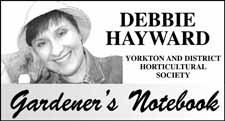I think we can say that fall has arrived. I know many people love the heat of summer, but I thoroughly enjoy the crisp days, the crunch of leaves underfoot, and the whole process of cleaning up the yard and putting this year's garden to bed. Another great year in the garden! Now we can enjoy a well-deserved rest.
Make a cup of tea, gardeners, and sit down for a few minutes. I'd like to tell you about something that we saw on one of our cooking shows recently. The name of the show was "The Mind Of A Chef", and the show was talking about a restaurant called "Husk", which has two locations, one in Nashville and one in Charleston, South Carolina. The mission of both Husk restaurants is to do "southern cooking", and most especially to use local ingredients, with an emphasis on heirloom vegetables and grains.
One of the grains they were using on his particular episode was "farro". The chef was making a delectable dish that he called "succotash", but it was not like the creamy, buttery dish from lima beans and corn that we familiar with. This "succotash" was made of fresh beans, fresh onions, fresh zucchini and squash, and a generous helping of farro grain.
So what is farro? It's one of those ancient grains that is suddenly very much in the spotlight again, like so many wonderful things from the garden. I knew nothing about farro, so time for homework! Farro is a grain similar to wheat or barley, and it may or may not be one of several different grains that have different names depending on where they are grown. It can be eaten as is, in a grain form, in a variety of recipes, or it can be ground into a flour.
Staying true to their mission to use heirloom varieties, the chefs even harvested the farro in a very old-fashioned way , by hand, and then obtained the grains with a method they called "fire-threshing".
They did this by setting the cut stems and heads of the grain into a fire until it looked blackened. Then, they would grab a handful of the stems, and start flailing them back and forth in a large wooden barrel. The kernels fell to the bottom of the barrel, and were then gathered up and used in the recipe. Very unusual! The whole process looked hot and exhausting, so if past cultures used this method as part of their normal harvest, they deserve a round of applause for effort!
From what I have read in my research, it sounds like we can use either wheat or barley as a substitute for farro in a recipe. So keep an eye out for recipes using farro!
The next meeting of the Yorkton and District Horticultural Society will be on Thursday, October 17 at 7:00 p.m. in the Sunshine Room at SIGN on North Street. This is "member-involvement" night, where everyone is invited to bring five helpful gardening hints to share with the group. I think Liz will be combining all these hints into a booklet form, which was much sought-after last year! So think of some hints before the 17th! But don't let the words "member-involvement" scare you - you don't have to be a member to come to the meetings! If you enjoy plants or gardening you are more than welcome!
And gardeners, if you are cleaning up your yard and find some exceptional veggies, you might want to consider enterting them in Harvest Showdown, which happens October 30 to November 2. I think it's a great idea to keep the tradition going of celebrating the best of the garden, and the Yorkton Exhibition has been doing that for well over a century. Call the Yorkton Ex office for details. Have a great week, gardeners!




